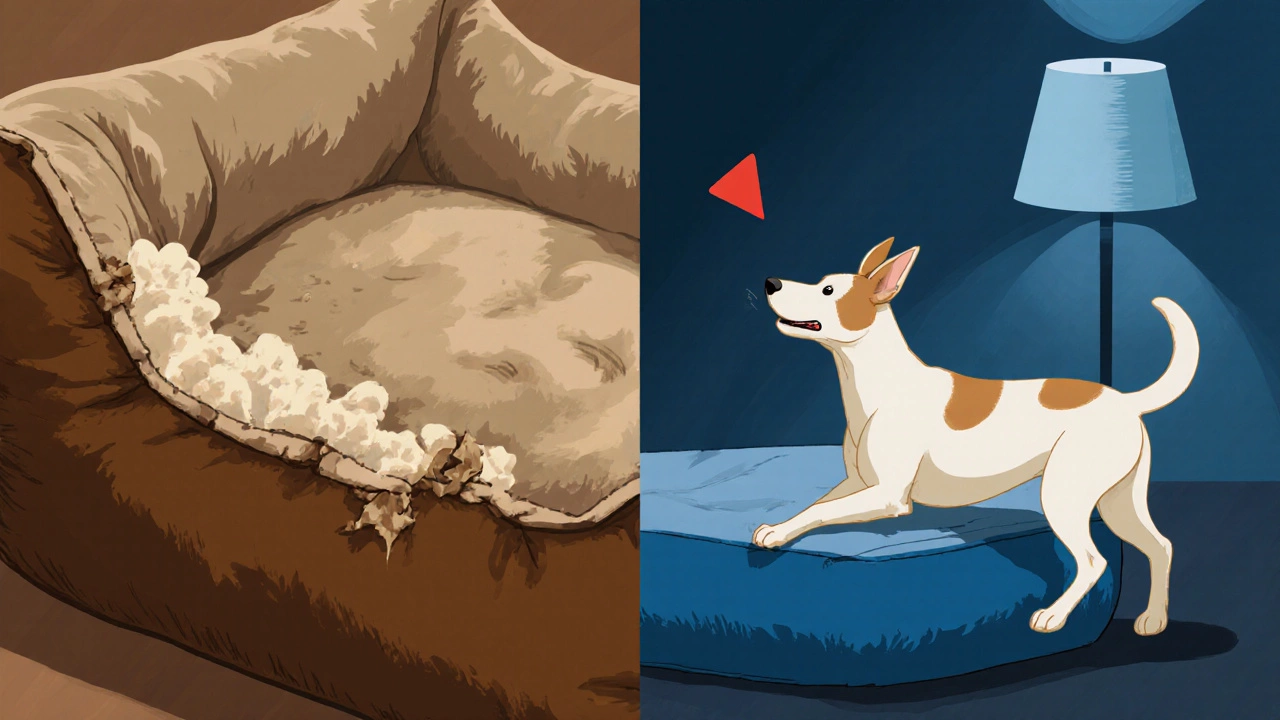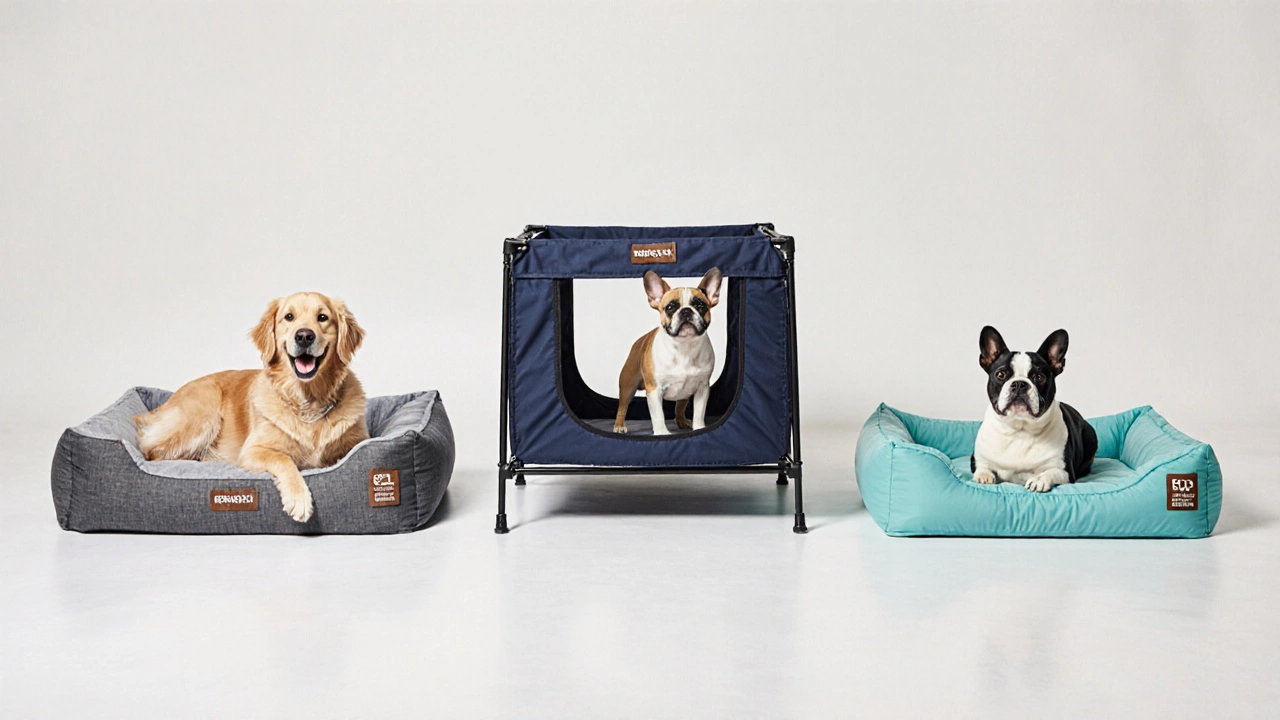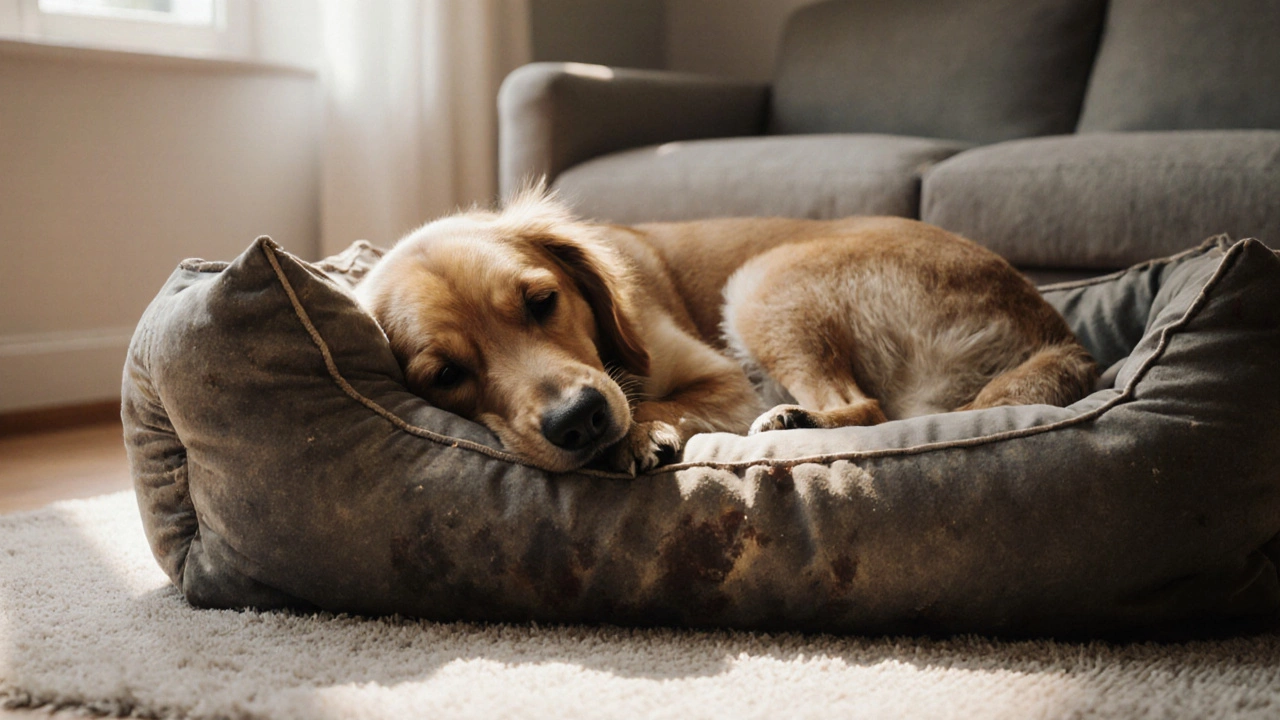Ever watched your pup flop onto their old, saggy cushion and wonder if it’s still doing the job? A tired, achy dog often points straight to the bedding they’re using. Knowing when a dog bed has run its course can keep your furry friend happy, healthy, and well‑rested.
Key Takeaways
- Visible wear, broken seams, or a loss of shape signals a replacement is due.
- Changes in your dog’s sleep habits-more restless nights, avoidance, or stiffness-are health red flags.
- Size, age, and any joint issues dictate how often you should upgrade the bed.
- Choosing the right material (memory foam, orthopedic, washable) prolongs comfort and hygiene.
- Regular cleaning and inspection can delay costly replacements.
What Is a Dog Bed?
Dog Bed is a dedicated sleeping surface designed specifically for dogs, offering support, insulation, and a sense of security. Common forms include raised cot‑style beds, plush pads, orthopedic mattresses, and bolted‑down mats for outdoor use. The right bed matches a dog’s size, activity level, and any special health needs.
How to Spot Physical Wear
The first clues are usually visual. Grab the bed and look for these tell‑tale signs:
- Flattened cushions: If the padding no longer springs back, the support is gone.
- Ripped seams: Dogs love to chew or dig; a broken seam can expose stuffing, leading to mess and discomfort.
- Faded or stained cover: Persistent odors or discoloration can indicate bacteria build‑up.
- Missing stuffing: Fluff spilling out makes the surface uneven and reduces cushioning.
Even if the bed looks okay, a quick press test-pushing your hand into the center-helps gauge resilience. If you feel a hollow or a “dead” feeling, it’s time for an upgrade.

Behavioral Red Flags from Your Dog
Dogs often communicate discomfort through their sleep patterns. Keep an eye out for these habits:
- Choosing a different spot in the house to nap.
- Restlessness: tossing, rolling, or getting up frequently.
- Reluctance to lie down, staying upright or curling up tightly.
- Whining or vocalizing when placed on the bed.
- Visible stiffness, especially after a night’s sleep.
These signs may indicate that the current bed no longer supports the dog’s joints or that the surface has become too hard or too soft.
Health‑Related Triggers
Age and health conditions dramatically impact bedding needs. Two core entities come into play:
Joint Health refers to the condition of a dog’s bones, cartilage, and ligaments, which can deteriorate with age or arthritis. When joint health declines, an orthopedic or memory‑foam bed can alleviate pressure points.
Allergies are hypersensitive reactions to materials such as latex, synthetic fibers, or dust mites that can cause skin irritation and respiratory issues. Hypoallergenic fabrics and removable, washable covers become essential for allergic dogs.
Dogs with chronic conditions like hip dysplasia or senior arthritis should transition to supportive beds every 1-2 years, depending on wear.
Size, Age, and Breed Matter
The relationship between a dog’s size and its bed is straightforward: the bed should be long enough for the dog to stretch fully and wide enough to turn comfortably.
Dog Size categorizes dogs into small (under 20lb), medium (20‑50lb), large (50‑90lb), and giant (over 90lb) groups, each requiring distinct dimensions. A Labrador will outgrow a small‑breed cushion within months, while a Chihuahua might keep the same placemat for years.
Age also affects needs. Puppies grow quickly-check measurements every 3months. Senior dogs benefit from added lumbar support, so consider upgrading to an orthopedic model after the age of 7.

Choosing the Right Replacement
When you decide it’s time for a new bed, match the choice to the dog’s specific requirements:
- Orthopedic Mattress: Ideal for large, senior, or arthritic dogs; typically made of memory foam or high‑density foam.
- Chew‑Resistant Cot: Perfect for aggressive chewers; uses metal frames and durable fabrics.
- Cooling Gel Pad: Great for hot climates or brachycephalic breeds prone to overheating.
- Eco‑Friendly Cotton: Soft, natural, and hypoallergenic; good for dogs with skin sensitivities.
Consider the following attributes when comparing options:
| Bed Type | Support Level | Durability | Best For |
|---|---|---|---|
| Orthopedic Foam | High | Medium | Senior, large, arthritic |
| Raised Cot | Low‑Medium | High (metal frame) | Chewers, outdoor use |
| Plush Pad | Low | Low‑Medium | Puppies, small breeds |
| Cooling Gel | Medium | Medium | Hot climates, brachycephalic |
Read the manufacturer’s warranty and look for removable, machine‑washable covers-that simple maintenance step can extend a bed’s lifespan by years.
Maintenance Tips to Extend Bed Life
Even the best bed will wear out if you ignore basic care. Follow these routine steps:
- Vacuum the surface weekly to remove hair and dander.
- Wash the cover every 2‑4weeks; use a gentle, fragrance‑free detergent.
- Rotate the mattress monthly to distribute wear evenly.
- Inspect seams and stuffing every 3months; repair small tears with pet‑safe fabric glue.
- Spot‑clean spills immediately to prevent mold and odor buildup.
With diligent upkeep, you’ll often get 2‑3years out of a high‑quality bed before needing a replacement.
Frequently Asked Questions
How often should I replace my dog's bed?
Most experts recommend checking the bed every six months. For senior dogs or those with joint issues, a replacement every 12‑18 months is common. Small breeds may keep a good‑quality bed for up to three years if the cover is cleaned regularly.
Can a cheap dog bed be harmful?
A low‑priced bed often lacks proper support and may use cheap fillers that flatten quickly. This can lead to joint strain, especially in large or older dogs. Investing in a supportive, durable bed reduces the risk of chronic pain.
My dog chews the bed - what should I do?
Switch to a chew‑resistant cot or a bed made from ballistic nylon. Providing durable chew toys can also redirect the behavior.
Are memory‑foam beds safe for dogs?
Yes, as long as the foam is CertiPUR-US certified, which means it’s free from harmful chemicals. Memory foam evenly distributes weight, reducing pressure on hips and knees.
How can I tell if my dog has a bed‑related allergy?
Look for red, itchy patches on the skin, especially around the neck, paws, and belly after sleeping. Switching to a hypoallergenic, natural‑fiber cover and observing improvement can confirm the diagnosis.
By staying alert to wear, behavior changes, and health cues, you’ll know exactly when that beloved cushion has earned its retirement. A fresh, supportive bed isn’t a luxury-it’s a cornerstone of a happy, healthy dog.
